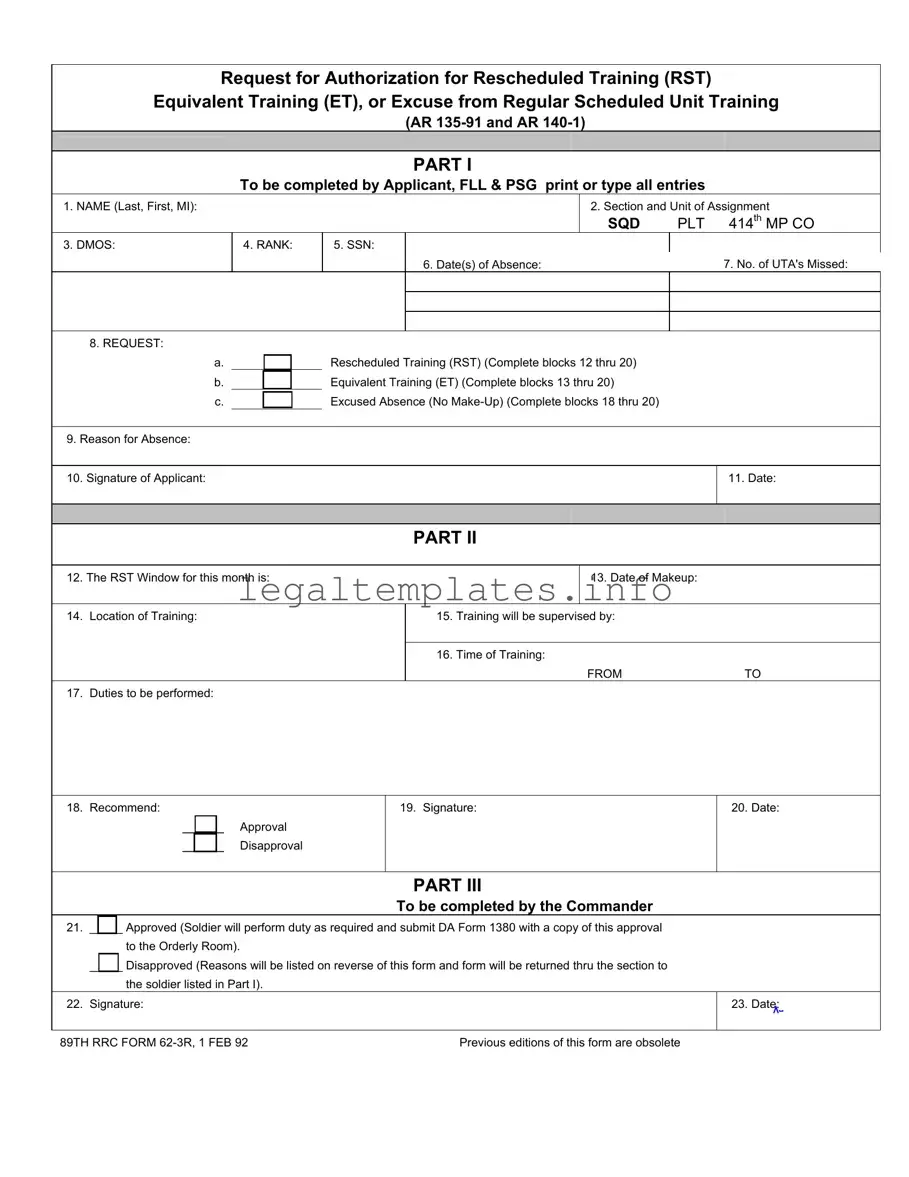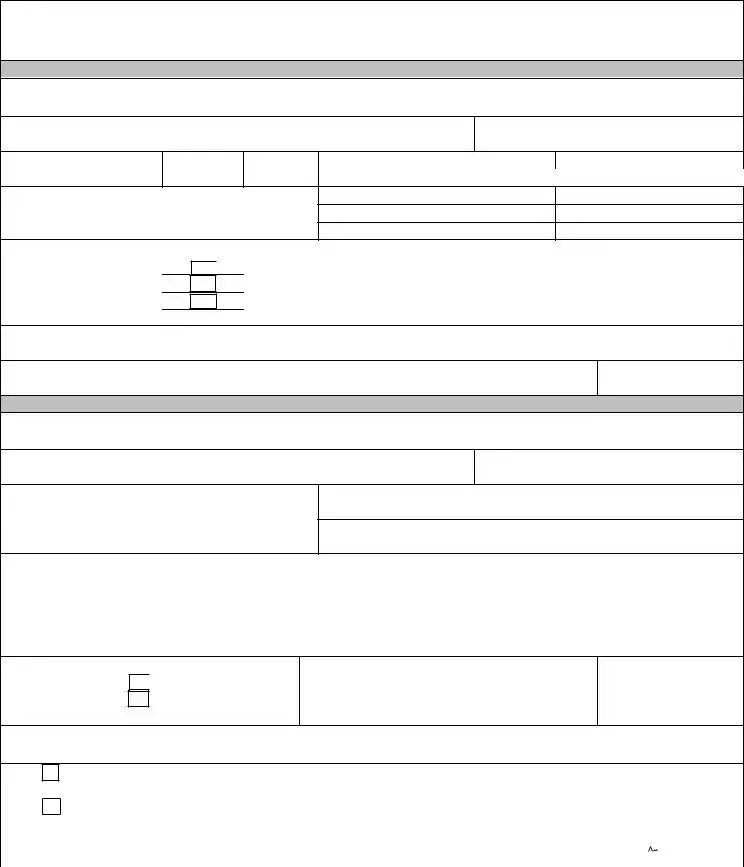The Leave Request Form used by military personnel mirrors the Rst Army Form in terms of seeking authorization for time away from official duties. Like the Rst Army Form, the Leave Request Form necessitates the individual's personal information, including their name, rank, and unit assignment. It also requires detailing the period of leave requested. Where the Rst Army Form includes options for rescheduled training or excused absence, the Leave Request Form similarly asks for the reason behind the leave request, ensuring that the approving authority has all necessary information to make an informed decision.
The DA Form 31, also known as the Request and Authority for Leave form, shares similarities with the Rst Army Form, particularly in its structure and intent to secure official approval for absence from duty. However, the DA Form 31 is specifically tailored for requesting leave, encompassing vacation, emergency leave, and other forms of absence not related to training. Both forms require the submission of personal and assignment details, the period of intended absence, and endorsements from the applicant’s chain of command.
The Individual Training Record, while primarily a tracking document, intersects with the Rst Army Form in its pursuit of documenting training and performance. It records training activities outside regular schedules, akin to the Rst’s logging of rescheduled or equivalent training. Both forms facilitate the management of military personnel’s training records, ensuring any deviations from standard schedules are officially noted and approved.
The Request for Excused Absence Form, often used in both military and civilian contexts, closely resembles the Rst Army Form’s section for excused absences. It details personal information, the reason for the requested absence, and includes approval signatures. This form, like the Rst Army Form, provides a structured approach to seeking permission for not participating in scheduled activities, emphasizing the importance of maintaining an orderly record of such instances.
The Application for Voluntary Reassignment is similar to the Rst Army Form in the sense that both involve a formal request process and require approval from higher authorities. This form applies to soldiers seeking reassignment to different units or locations. While focused on reassignment rather than training absences, it parallels the Rst Army Form in its need for detailed personal and professional information, reasons for the request, and a structured approval process.
The Training Adjustment Form shares common goals with the Rst Army Form, especially in its facilitation of changes to scheduled training. This form is designed to propose adjustments, whether for postponement, rescheduling, or modification of training plans. It encompasses reasons for the adjustment and seeks endorsement from supervisory personnel, echoing the Rst Army Form’s procedural approach to handling changes in training schedules.
The Professional Development Application, although generally used for academic or career advancement opportunities, aligns with the Rst Army Form by requiring individual details, the nature of the request, and official endorsements. Similar to the Rst Army Form’s sections on equivalent training, this application supports the notion of seeking approval for professional growth activities outside the regular duty or training scope, highlighting the formalities of pursuing such opportunities within structured organizations.
The Personnel Action Request Form (PAR), widely used for various administrative actions within the military, shares the Rst Army Form’s essence in seeking authorization. The PAR can encompass requests ranging from training to personal matters, requiring detailed submission of the applicant's information, the request's specifics, and requisite approval signatures. Its broad application and structured format for soliciting and documenting approvals make it akin to the processes outlined in the Rst Army Form.

